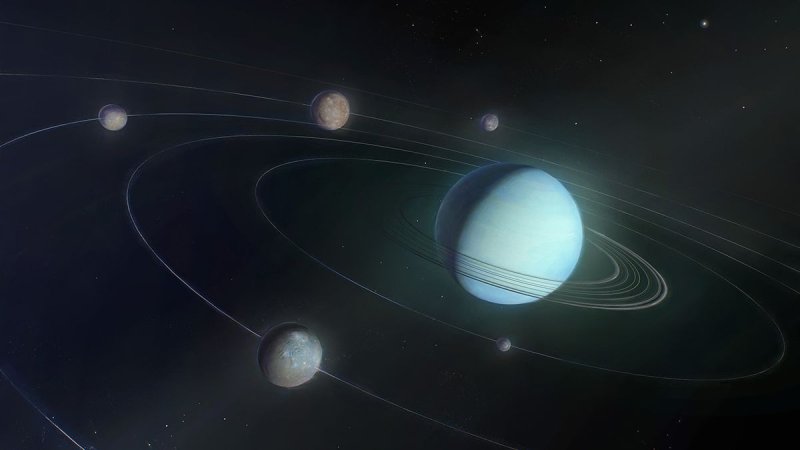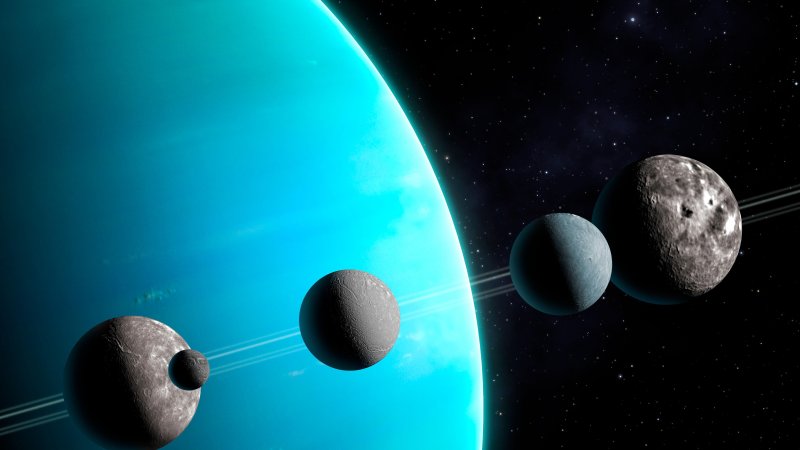
 Uranus and Its 5 largest Moons
Uranus and Its 5 largest Moons
Our understanding of Uranus comes mainly from data collected nearly 40 years ago, during NASA’s Voyager 2 mission. In 1986, Voyager 2 flew past Uranus, capturing breathtaking images and data. This data showed that, unlike other planets and their moons, the Uranian system appeared inactive, with a distorted magnetic field. Scientists believed this meant that Uranus and its moons were sterile.
However, new analysis reveals that Voyager 2’s visit happened during a powerful solar storm. This storm might have temporarily disrupted Uranus's magnetic field and swept away signs of activity, leading to a misleading view of the planet and its moons.
According to Dr. William Dunn from University College London, this re-evaluation suggests that Uranus’s moons might have hidden oceans. "There could be moons with conditions for life,” he said, “possibly with oceans beneath the surface."
Linda Spilker, a Voyager program scientist, welcomed the findings with excitement. "It’s thrilling to find out that there could be potential for life in the Uranian system,” she remarked. Dr. Affelia Wibisono from the Dublin Institute of Advanced Studies, who wasn’t involved in the research, also called the results “very exciting,” emphasizing the value of revisiting old data.
These findings have inspired NASA to plan a new mission, the Uranus Orbiter and Probe, scheduled for launch within the next decade. This mission aims to gather updated data on Uranus and its moons.
NASA’s Dr. Jamie Jasinski, who proposed re-examining the Voyager 2 data, explained that his findings will influence how the new mission’s instruments and survey plans are designed.
"Some of the tools for the upcoming spacecraft are specifically being crafted based on what we learned from Voyager 2’s flyby, which happened during an unusual event," he noted. "This means we need to reconsider how to design these instruments for the new mission to ensure we can gather the scientific information needed for future discoveries."
The Uranus Orbiter is expected to arrive by 2045, potentially revealing if these distant, icy moons might indeed support life.